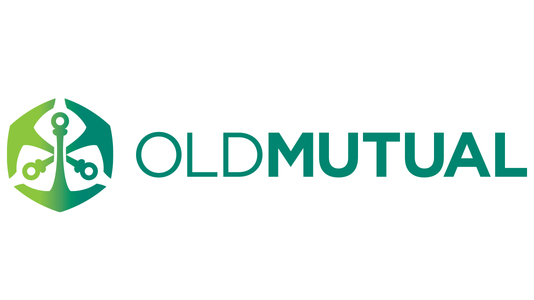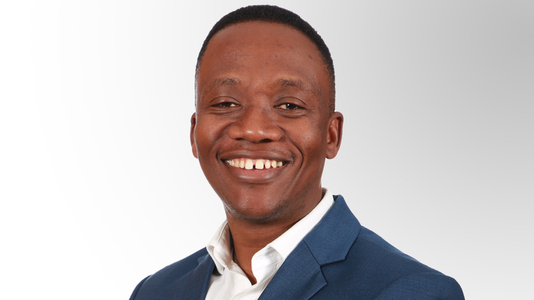

MOSALA PHILLIPS
CMO
Old Mutual
Mosala Phillips is an experienced Marketing and Brand Commercial Strategy Executive. He joined Old Mutual in 2021 following more than 16 years in the FMCG industry with Procter & Gamble. Here he had extensive experience across multiple brands, including Always, Ariel, Gillette, Head & Shoulders, Vicks, Pantene, and Oral B, to name a few. He also had regional market responsibilities across Europe, the Middle East and Africa. He has lived and worked in South Africa, Switzerland, Kenya and Ghana. He holds a BSc in Electrical Engineering from the University of Cape Town, and is currently completing the London Business School Executive Program. As CMO of Old Mutual Ltd (OML), he is responsible for the 178-year-old, $16.5 billion financial service company brand, which was founded in 1845. Old Mutual, which is headquartered in Cape Town, South Africa, offers insurance, asset management and banking services to individuals, institutions, and corporate customers. It operates in South Africa, Namibia, Botswana, Eswatini, Malawi, Zimbabwe, South Sudan, Kenya, Uganda, Rwanda, Tanzania, Ghana, Nigeria and China, through branches and tied agents.
CMO COUNCIL: What skills, practices, and learnings from 16 years at P&G are you able to apply in your group CMO role at Old Mutual?
PHILLIPS: The good thing -- which is unique in FMCG versus other industries, is that marketing is not the supporting function but is really the commercial function. The brand is at the center and all other functions are supportive to help drive the best outcomes for the brand. My CEO at the time had an expression that he repeated all the time, “Consumer is the boss.” Everything from packaging to communication, to R&D to finance, to logistics, to R&D - everything pivots around what is best for the consumer. If it's the best thing for the consumer, it will be the best thing for us, our retailers, our suppliers, and all our business partners across the value chain. In addition, it gives our brand a competitive edge over the competition.
What makes the best thing for consumers starts first with insights. Marketers often confuse facts and insights. The way I always describe it to my team, is that data tells you what is happening. That's the data piece - but insights tell you why it's happening.
When I'm sitting in the boardroom as a marketer, I’m required to be deeply immersed in the business and the financial details. You need to understand the business constraints and opportunities, as well as what management is trying to achieve with the business. This ensures that marketing plans are not disjointed from the boardroom priorities. I think most of the time that disconnect happens when marketers come in talking about brand equity, purpose or spend, but fail to translate this into a business case or performance outcome.
Coming from FMCG with no financial services experience, I had a smoother landing. My first priority was to understand the business and talking to people in the business units. Then it was important that I translate marketing plans and demonstrate how the plan was helping to drive respective business priorities connected to revenue, market share, margin, growth, transactional value, retention, and incremental sales growth plans.
CMO COUNCIL: How are you approaching the challenge of harvesting customer insight and value from data distributed across Old Mutual’s existing lines of business?
PHILLIPS: Yeah, it's a big headache. So, there's a couple of things that I have done. I’ve appointed a head of knowledge and insight with three support specialists: a senior data analyst and two junior data analysts. Then, I connected them with the central data team. Our data is housed with different business segments and silos. Each operational unit is only interested in their own line of business. I'm more interested in understanding holistically because you can find customers across multiple service areas. I'm interested in understanding the vertical and the horizontal. Deeper, unified view of all customers is helping identify new opportunities for cross-selling, revenue optimization and value creation.
I'm also interested in looking beyond customer transactions and beyond the data that we use for risk profiling. I want more insight into customer behaviors, life stages, predispositions, and motivators; which advisors have the strongest relationships, and how often they engage, etc., is important.
On top of that we integrate analytics and insights with media data. Pulling in our media information from both television and digital platforms to create a more detailed attribution picture around media spend, campaign effectiveness and customer response. We're building this integrated data hub which will give us the flexibility to have an end-to-end view of the customer, track brand equity, and understand multi-channel media performance.
CMO COUNCIL: How do you deal with the challenge of working through intermediaries and gathering data from your partner advisors and field agents?
PHILLIPS: We collect and use data in-line with all Private Data law requirements. There are two distribution channels where we collect customer data, Direct Digital sales and Advisor sales. The direct digital sales are really relatively small, but continues to have strong growth pace. Most of the business is through advisors, as customers still want to engage with humans for financial advice. This is split in two: we have our internal advisors who work for Old Mutual and their data is automatically captured in the system. Second, is our independent advisors and brokers distribution - the challenge comes with collecting other data from our independent advisors and brokers. They're using the same systems to capture the information. So, the basic information they enter is consistent for risk or investment profiling. It's when you're trying to do other things with more enriched customer data. Independents want to own and keep certain client information, as they work with multiple partners. This is where trust comes in. I think it helps that most independent advisors have been doing business with Old Mutual for years and we also have a strong interest in helping grow their business portfolio. The push back from independent channels often is: ‘Why do you want more data? To answer which questions? To help us develop what solution today that we don't have?’
Here, I have even better data than what I used to have at P&G, because first-hand customer used to be resident with retailers. However, the disadvantage is not having frequent competitive landscape data as I did at P&G. Here the advantage is I have first-hand, reliable customer data because customers pay premiums to us. We have valuable, current, and reliable personal data. This is much more powerful, usable data from which to gain predictive, actionable insights.
CMO COUNCIL: How do you as the Group CMO of Old Mutual interface with chief marketers across the different lines of business?
PHILLIPS: So, the structure is as follows. The central team – similar to big multinationals, what they will call the “global” team -- have a direct reporting line to me. Then all the heads of marketing in the different segments, have a dotted line to me. Then we also have a governance structure involving all the marketing heads forming a Marketing Exco. I chair that forum. We meet to discuss strategies, where we're going, and what marketing plans are in place to support the brand and capitalize on opportunities. On top of that, I meet monthly on an individual basis with each marketing head regarding their respective business lines and where they might need help and guidance. And lastly, I also liaise with the heads of the different businesses to make sure that I'm current on the dynamics and directions of their business strategy and operations.
On the performance measurement side, we have reviews of business line marketing every two months. Marketing heads present what they've delivered, and how well they are doing, etc. This gives me a bit more of visibility into what's happening, what they're doing, and the opportunity to provide feedback on the work and make sure that I'm always in sync with the groups. It's a big organization with about 270 marketing professionals. It's practically impossible for me to know everything that is happening at any given time, but that's why we have marketing leaders for each line of business.
CMO COUNCIL: What do you see is your role when it comes to culture and organizational branding to make “customer is boss” a pervasive sentiment?
PHILLIPS: The company has a foundational, inner fabric commitment to customer-centricity. You have no choice but to be customer-centric irrespective of how direct or indirect your business is. Whether you are the one who's having first contact with the customer, or through your brokers, you have no choice. You are required to put the customer first whatever the location, nature, or channel of interaction. Customers form opinions about your brand based on the way you engage, handle, and resolve their needs or problems.
When people say, “I had a bad experience”, they don't say I had a bad experience with a certain person who works at the call center, or advisor or social media account manager. They say they had an experience with Old Mutual.
Whatever contact point the customers decides to use -- be it a chatbot, help desk, consultant, or an advisor -- it's your brand customers are engaging with and that’s what shapes opinions and sentiment about your company. And we know that word of mouth is the most powerful form of marketing. Insurance is does not have frequent purchasing cycles and is more complex compared to a toothpaste as most of the time people know what they prefer, and purchase price is not that significant. Buying a financial service product, in general there's a lot of consultation that people do. They will read online reviews of people's experiences, they'll talk to friends, or shop a range of competitive offerings. It’s rare someone will just buy a product from a financial service or insurance provider without checking some reviews, checking with others, or talking to an advisor.
What they're mostly asking is, can I trust this brand to give me a brilliant brand experience and do I trust them to fulfill their promise. That's what customers try to validate because it's very difficult to determine which policy, plan or investment offering is better vs. different companies. What they're really trying to verify is the brand experience and the trust. Will they deliver on what they promise?
My role is at the heart of making sure all the conversations and operations bring in, and are sensitive to, the customer voice. For example, I recently presented in a meeting with all the top business leaders, about 400 of them. I was not talking about the next campaign or advertising, but how to acquire, delight and retain customers and where we have opportunities to further growth. So that's really one of my critical roles when I attend management meetings and reviews; bringing data-based insights that track and underscore customer satisfaction and model this against business economics and performance. The response to that then is the marketing plan that builds brand equity and helps drive the achievement of business objectives.
